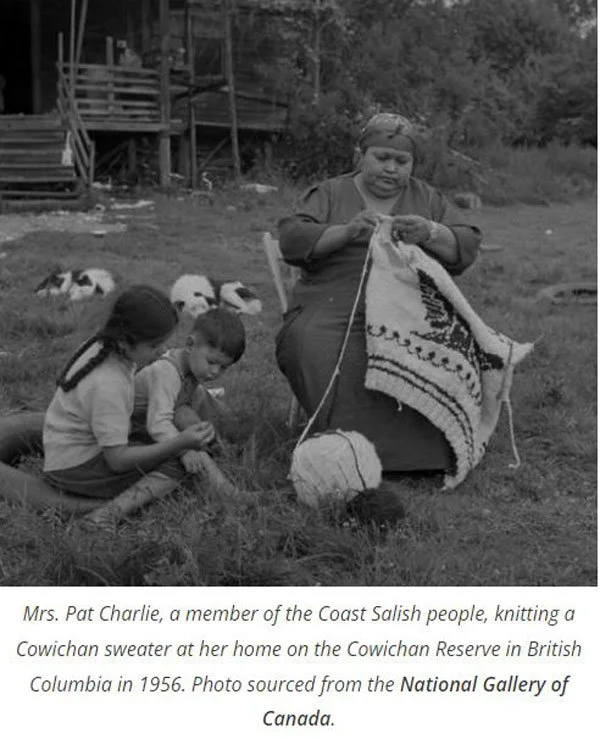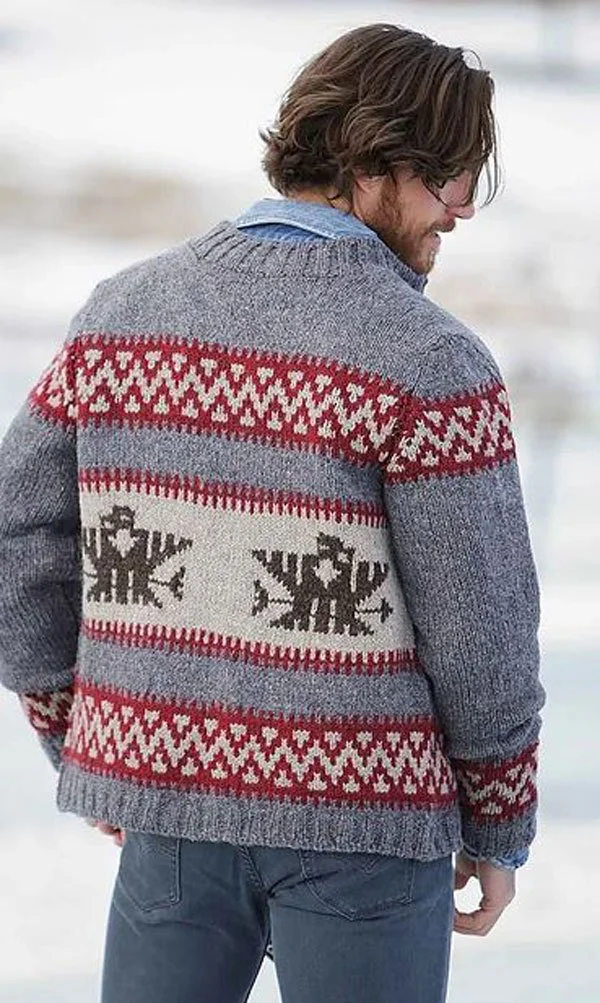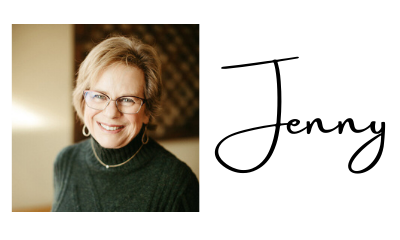One Final Postcard from: Vancouver Island, British Columbia, Canada
This last postcard comes from southern Vancouver Island, British Columbia, Canada. Here we find the traditional Cowichan sweaters, knit by the Coastal Salish people.
Cowichan is pronounced COW i chen and means ‘the warm land’. The designs of these sweaters are closely tied to the cultural identity of the Coast Salish people. Only knitwear handmade by them can be called genuine Cowichan and they’re labeled as such. Anything else is labeled ‘inspired by’, ‘Cowichan style’, or simply a Canadian sweater.
Dora Wilson, long-time Cowichan Tribes councilor, in one of her Cowichan sweaters. ©Jeffrey Bosdet
Authentic Cowichan sweaters are made of sheep wool from Vancouver Island that is hand spun and unprocessed to retain its lanolin; this makes the sweaters virtually waterproof. Dyes are not used so the colors reflect the colors of the sheep from creamy white to black; there are usually only two to three colors in a sweater. Black wool is highly sought after because it’s rare. Knit in the round, the only seams are at the shoulders and they have a shawl collar.
Another of Dora’s sweaters courtesy ExTrance/Wikimedia from The Canadian Encyclopedia
The sweaters have several horizontal bands of designs that continue onto the sleeves and back. These usually include geometric patterns with a non-geometric figure in the center. Originally they were pullovers, with cardigans coming later. Bulky weight yarn was the norm for Cowichan sweaters. Each knitting family typically has a binder of patterns that has been passed down through the generations. Designs come from many sources: some are copied from traditional Coast Salish baskets and blankets, others are from everyday sources such as floor tiles, tablecloths, lace curtains, and animals. Some designs are only for Indigenous use and are not put on sweaters for sale.
The exact beginnings of the Cowichan style are not known for sure. One school of thought believes that knitting was introduced by a Scottish immigrant from the Shetland Islands, Jeremina Colvin, in the late 1800s. Another thinks that the Sisters of St. Ann, from Quebec, brought knitting to the Indigenous schools for girls that they opened in 1858. Either way, it’s thought that the Salish women and girls weren’t satisfied with the patterns they were taught and incorporated designs from traditional weavings into their sweaters.
Jane Richmond’s Cowichan inspired West Coast Cardigan © Jane Richmond
Only Coast Salish people wore the sweaters until the 1920s when Indigenous crafts became valuable collectibles by settlers. The garments were then sent to fairs and exhibitions which resulted in knitters selling their sweaters to merchants.
The Knitter’s Dude, a Cowichan inspired sweater by Andrea Rangel © Kathy Cadigan 2015
The peak popularity of Cowichan sweaters was in the 1970s and 1980s when practically every celebrity and dignitary who visited Canada was given one. Sadly, the number of active Cowichan sweater knitters is dwindling, perhaps to about only 24. Many of the sweaters sold in stores are now knit by people from Saanich Peninsula tribes. Island tribes have always intermarried and shared their knowledge; the immediate concern is ensuring the tradition continues.
Eagle Island Cardigan, an updated Cowichan inspired sweater by Meghan Babin. © Interweave / Harper Point
In 2011, Cowichan knitters and sweaters were recognized by the Canadian government as being nationally and historically significant, noting that they bring to life “the spiritual, cultural, and physical ties that First Nations have in Canada”.
“Stitch by stitch, mother to child, for more than a century, the people of the Cowichan have been knitting their stories into their famous sweaters.” Jody Paterson
Next week I shall be back and recovered from my ‘bucket list’ travels! Until then…..
Happy knitting,








